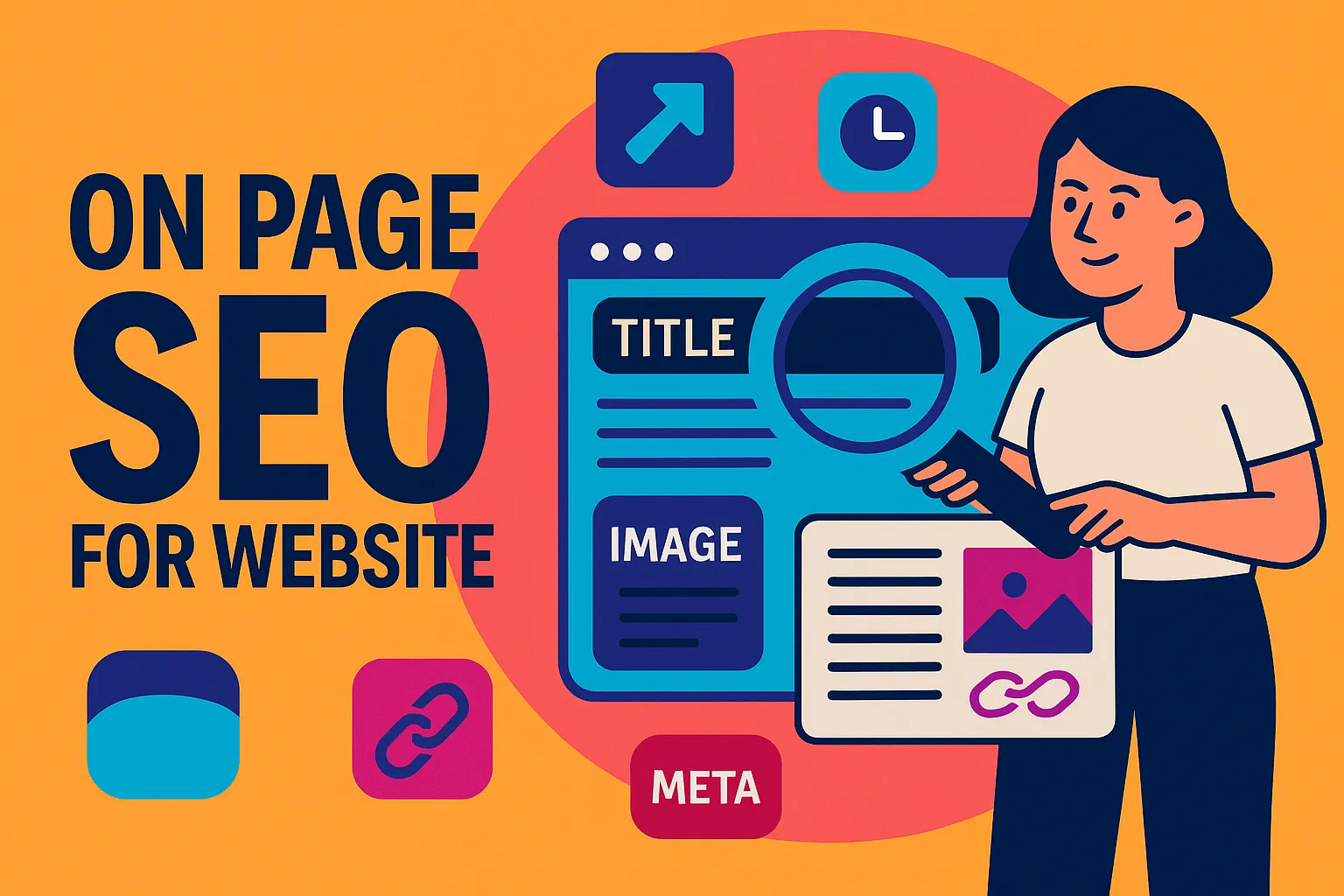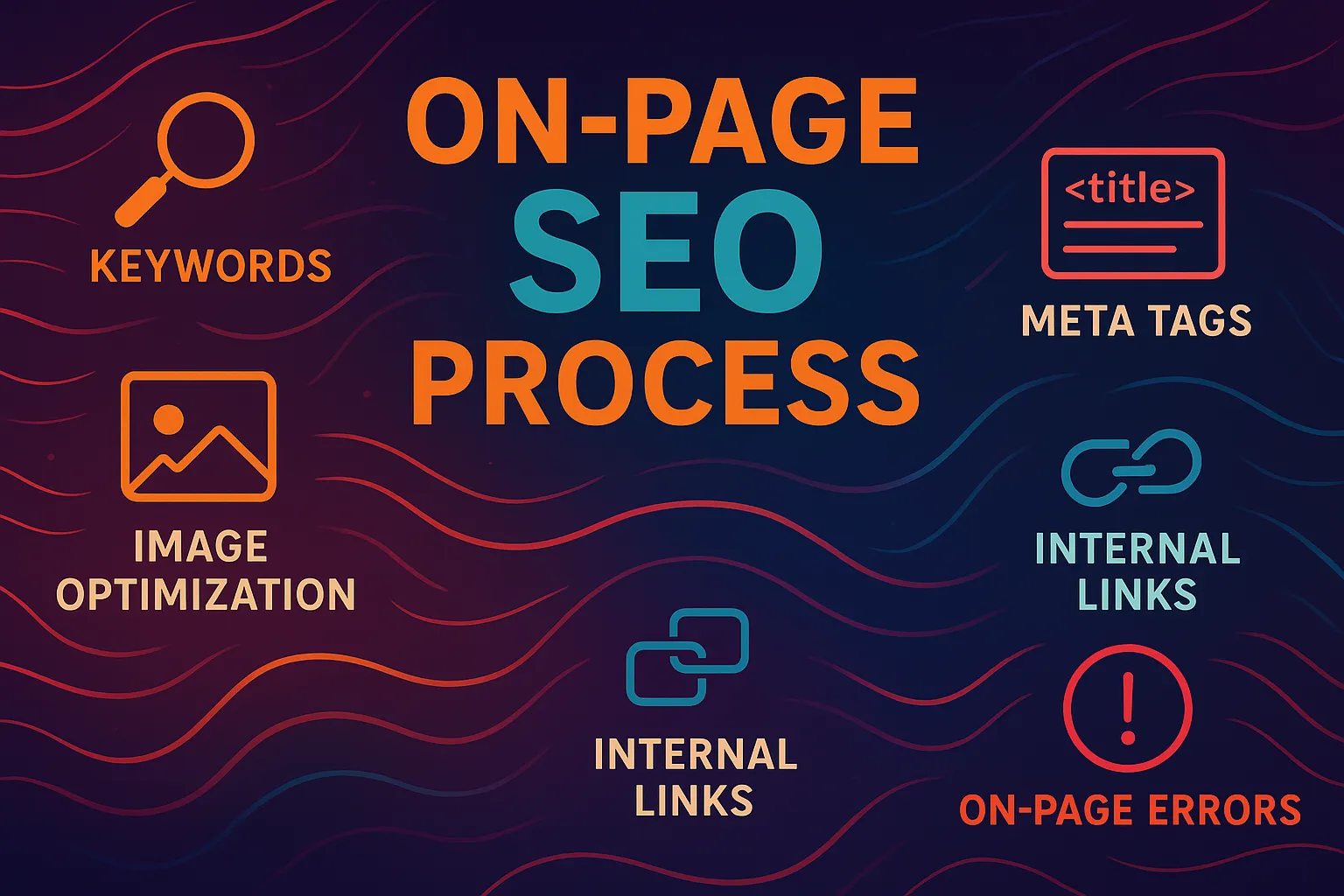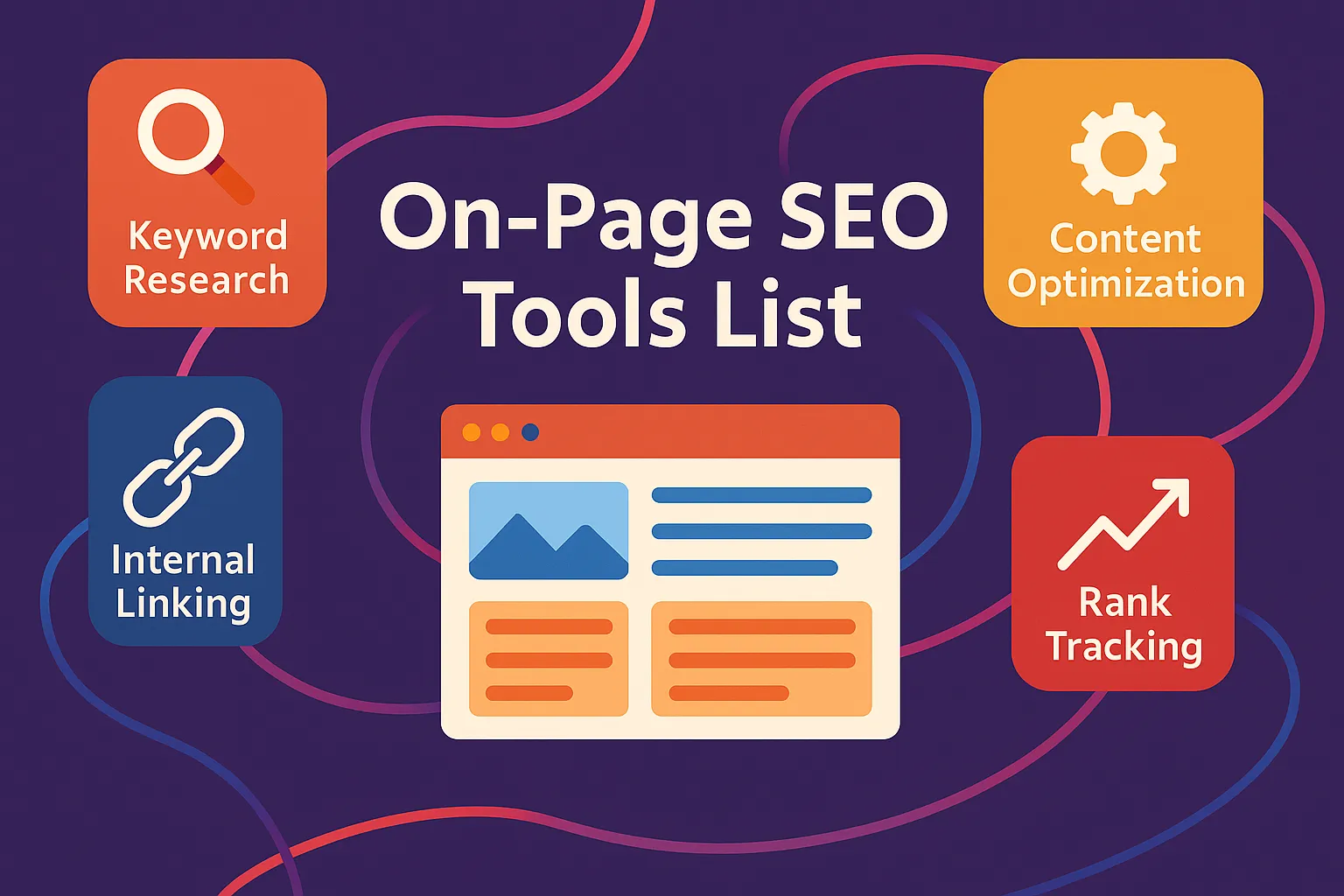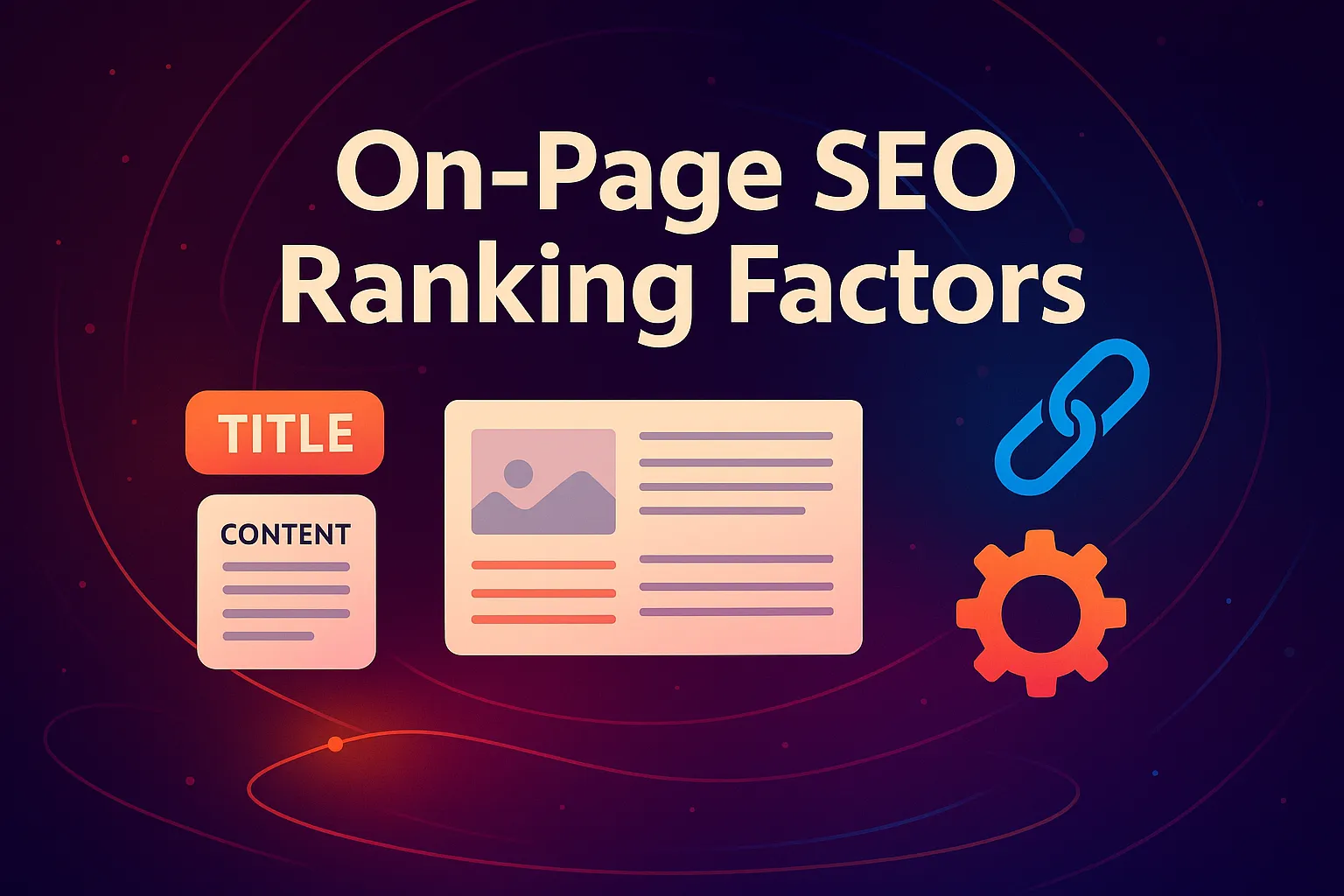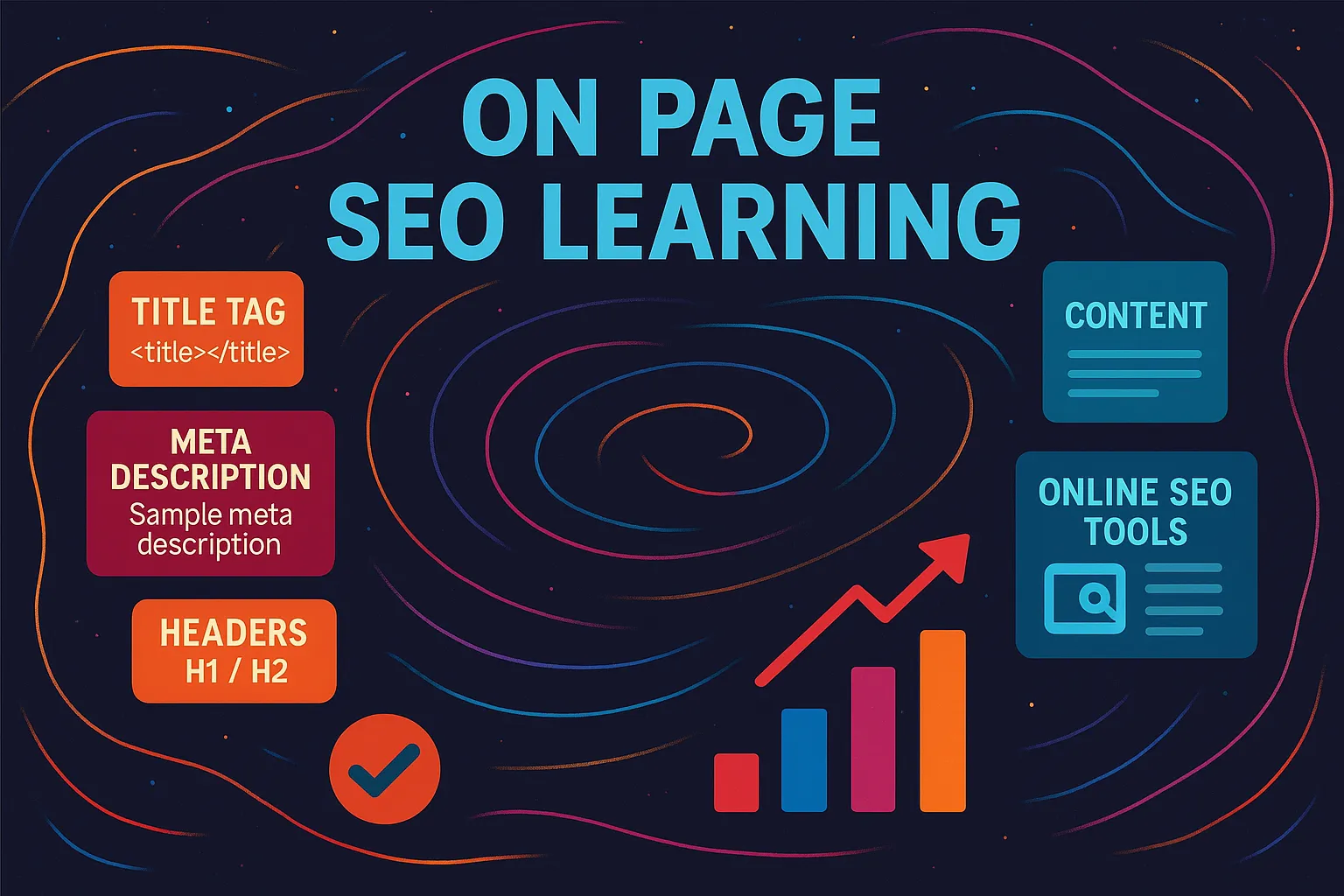What Is “On Page SEO for Website”?
At its core, on page SEO for website refers to everything you can control directly on a webpage to improve its chances of ranking well in search engines. It’s the foundation of good SEO—the first place we look when a client at Vibe Branding asks why their site isn’t getting the traffic it deserves.
Unlike off-page SEO, which includes things like backlinks and social shares, on-page SEO focuses on things like content quality, keyword usage, meta tags, structure, speed, and internal links. It’s what tells Google exactly what your page is about—and whether it deserves to show up when someone searches for a topic you cover.
After 10 years helping businesses grow through smart SEO strategies, I can say confidently: on page SEO for website success is 100% within your control. And when it’s done right, the results are powerful.
TL;DR – What You’ll Learn in This Guide
- What “on page SEO for website” really means and why it matters in 2025
- How it differs from off-page SEO (and why it’s the foundation of your visibility)
- The key components you must optimize to rank and convert
- How to properly use titles, keywords, images, and structure your content
- Tools I personally use at Vibe Branding to fine-tune every page
- A checklist to help you apply these techniques to your own site today
Why On-Page SEO Still Matters in 2025
Every time Google updates its algorithm, we hear the same questions: “Do keywords still matter?” “Is meta data still important?” My answer?
Absolutely yes. In fact, on-page SEO is more important now than ever.
Google has become smarter, but it’s also become more demanding. The search engine wants to show users content that is fast, mobile-friendly, trustworthy, and deeply relevant.
If your site can’t meet those standards, you simply won’t compete. We see this every day with our clients.
One recently came to us with a beautifully designed website that was invisible in search results. A quick audit revealed missing H1 tags, duplicate meta descriptions, no internal linking, and content that didn’t answer user intent.
Once we addressed these basic on-page SEO issues, traffic doubled in 60 days. Why?
Because Google finally understood what their pages were about.
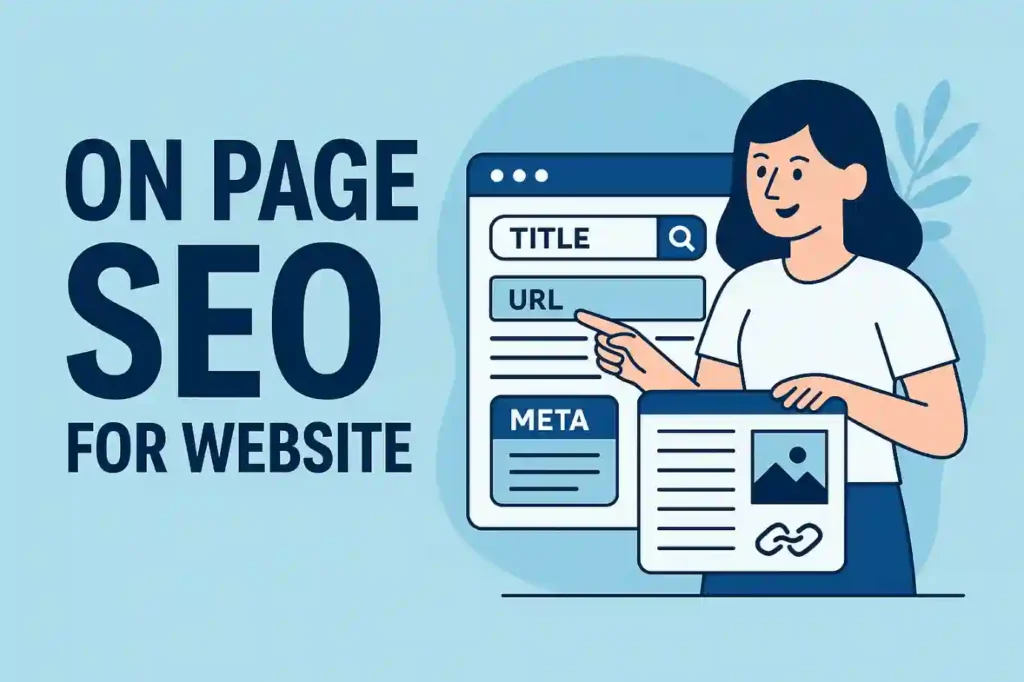
On-Page SEO vs. Off-Page SEO
Let’s clear up some confusion. While they work together, on page SEO for website optimization is not the same as off-page SEO.
Think of it this way: on-page SEO is your resume. Off-page SEO is your references.
You need both, but one comes before the other. On-page SEO involves your headlines, meta descriptions, internal links, keyword placement, URL structure, and image optimization.
It’s the stuff you can change, test, and improve today. Off-page SEO, meanwhile, includes things like backlinks, brand mentions, and guest features.
These take time, relationships, and trust. But none of that matters if your house isn’t in order.
Here’s a quick table to show the difference:
Feature | On-Page SEO | Off-Page SEO |
Focus | Inside your website | Outside your website |
Examples | Content, meta tags, URLs, images | Backlinks, shares, mentions |
Control | Directly controlled by you | Indirect, influenced by others |
Setup Time | Immediate | Gradual, long-term |
Ranking Impact | Foundational | Supplemental (but powerful) |
When we work with clients at Vibe Branding, we always start with on-page SEO. It’s the easiest way to see fast gains.
The Core Elements of On-Page SEO
To do on page SEO for website the right way, there are a few must-have elements that I consider non-negotiable. First is the title tag.
This is what appears in search engine results and it’s often the first thing a user sees. It must include your target keyword and give a reason to click.
Next is your meta description. While it doesn’t directly affect rankings, it can absolutely impact whether someone clicks your link or skips to the next one.
Then there’s the actual content. Is it relevant?
Does it satisfy the intent behind the search query? Does it include keywords naturally?
At Vibe, we also look at content structure—using H1 for the page title, then H2s and H3s to break things up. This makes content easier to read and signals importance to Google.
Don’t forget internal links. Linking to your own content helps search engines crawl your site and keeps users on your pages longer.
Lastly, we look at URLs. They should be clean, short, and keyword-relevant.
Crafting Title Tags and Meta Descriptions That Drive Clicks
Over the past decade, I’ve tested thousands of title tags and meta descriptions. Some bombed.
Others skyrocketed click-through rates. The ones that work best do three things: they include the main keyword, they are under the character limits (60 for titles, 155 for descriptions), and they give a reason to click.
Let’s take the keyword on page seo for website. A solid title might be: “On Page SEO for Website Owners: A Simple Guide to Boost Rankings”.
Notice how it’s clear, includes the keyword early, and offers a benefit. The matching meta description might read: “Learn how to use on page SEO for website optimization to rank higher, get more clicks, and convert visitors into buyers.”
This formula isn’t flashy, but it works. Why?
Because it speaks to what users are looking for. If you want to win in SEO, you have to stop thinking like a marketer and start thinking like a searcher.
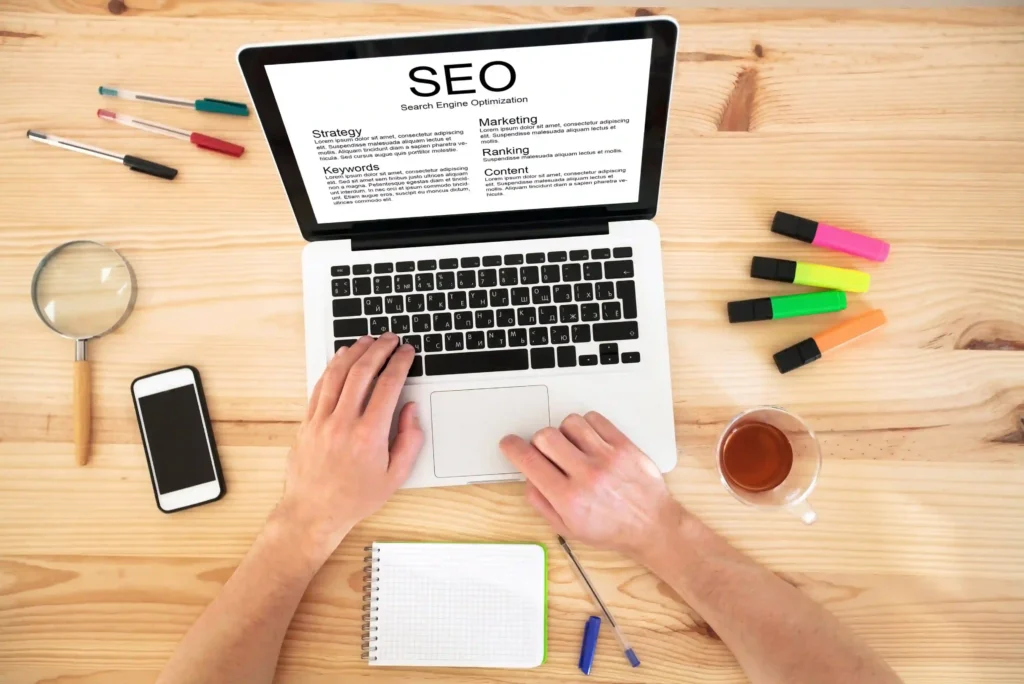
Keyword Placement: Natural, Not Forced
Gone are the days of keyword stuffing. Today, smart SEO means knowing where and how to place your keywords so that they serve the reader and the algorithm.
When optimizing for on page seo for website, I place the keyword in five key spots:
- The title tag
- The H1 tag
- The first 100 words of content
- One or two H2 or H3 subheadings
- The meta description
I also make sure the keyword shows up naturally throughout the article. Not every paragraph.
Not every sentence. Just enough that if a reader skimmed the page, it’d be clear what it’s about.
For example, in this article, you’ll notice I’ve used on page seo for website exactly as written multiple times. It’s intentional, but it never feels robotic.
That balance is the key.
How to Structure SEO Content That Works
I’ve reviewed hundreds of pages where great content failed simply because it wasn’t structured well. Google and human readers both love structure.
That means using headings, paragraphs, bullets, and visuals to make your message easy to follow. At Vibe Branding, we follow a basic format for long-form content.
Start with a clear H1 headline. Break major points into H2 sections.
If those points have subtopics, use H3s. Keep paragraphs short—no more than 3 to 4 lines.
Use bold text sparingly to highlight key ideas. And always include a call to action near the end.
You should also use anchor links for long content (like the TL;DR at the top of this post). This makes the content easier to navigate, and Google appreciates the extra structure.
Headings aren’t just styling—they’re signals. When your content is well-organized, it performs better.
Every time.
Internal and External Links: A Balancing Act
When I first started in SEO, internal linking wasn’t taken seriously. Now?
It’s a cornerstone of every campaign we run. By linking pages together with relevant anchor text, you create a roadmap for Google.
You also keep users engaged longer, which boosts rankings indirectly. Say you wrote a post about meta descriptions.
From this page on on page seo for website, you should absolutely link to it.
That’s not only good for SEO—it’s good for your users. They get more value, and you build authority.
External links matter too. Linking out to trusted sources like Google, Moz, or Semrush can signal that you’re well-researched and trustworthy.
Just don’t go overboard. I typically recommend one outbound link per 500-700 words unless the topic demands more.
And never link to low-quality or unrelated sites. It’s like inviting strangers to your dinner party.
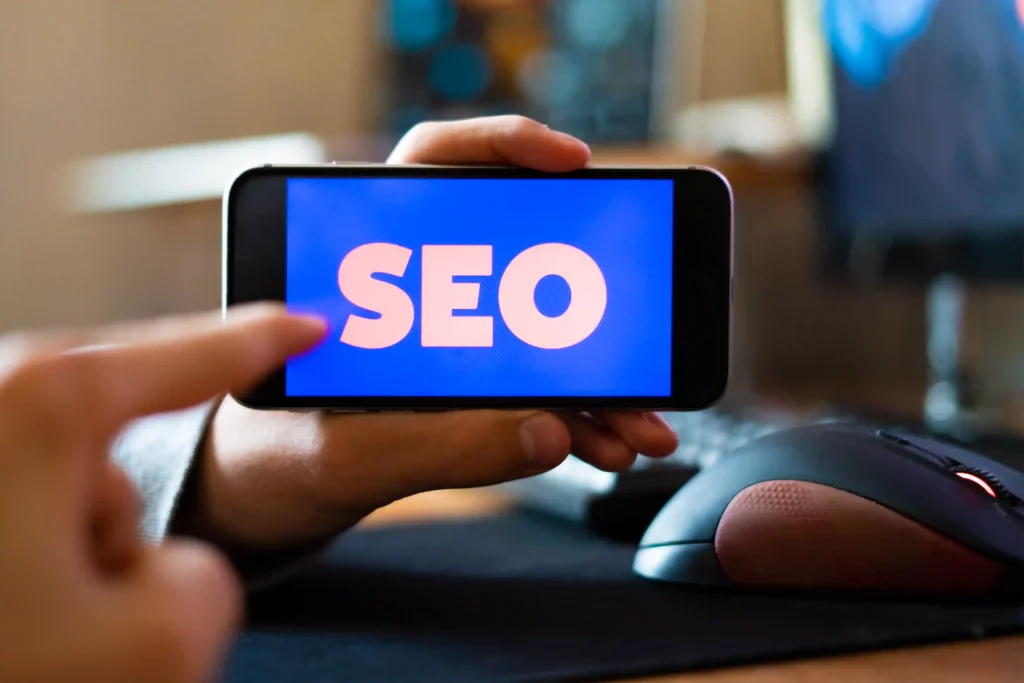
Image Optimization: Alt Text, File Names, and SEO Boost
One of the most overlooked aspects of on page SEO for website optimization is image SEO. I can’t count how many websites we’ve audited at Vibe Branding where the images are named “IMG_2030.jpg” with no alt text.
That’s a huge missed opportunity. Search engines can’t “see” images the way we do.
They rely on filenames, alt attributes, and the surrounding content to understand what an image represents. That’s why it’s so important to name your files descriptively—something like “on-page-seo-example-chart.png” instead of a generic name.
Then, write clear and concise alt text that describes what’s in the image. This helps with accessibility, which is something Google cares about too.
Here’s the bonus: properly optimized images can show up in Google Images, driving extra traffic to your page. We’ve seen image traffic account for 5–10% of total traffic on some of our clients’ pages.
Plus, optimizing images by compressing their size helps improve load speed, which is another ranking factor. It’s a win-win for UX and SEO. Next, I’ll continue with the section on page speed and mobile friendliness.
Page Speed and Mobile Optimization: UX Signals That Rank
A website that looks amazing on desktop but takes 10 seconds to load or breaks on mobile is a problem. Google has made it clear that page speed and mobile responsiveness are both ranking factors—and they also directly affect user experience.
At Vibe Branding, one of the first things we audit on a new client’s site is how quickly it loads and how it looks on a phone or tablet. We use tools like Google PageSpeed Insights and GTmetrix to find bottlenecks.
Often, the biggest issues are uncompressed images, unused JavaScript, or lack of caching. These are relatively simple fixes with huge SEO benefits.
And when it comes to mobile, we make sure fonts are readable, buttons are tap-friendly, and layouts adapt smoothly to different screen sizes. Improving speed and mobile UX doesn’t just help with SEO.
It reduces bounce rate, increases conversions, and keeps visitors happy. In 2025 and beyond, that’s non-negotiable.
Top Tools to Audit and Improve On Page SEO
Having the right tools is like having a flashlight in a dark room. Here are my go-to resources when it comes to optimizing on page SEO for website success:
- Google Search Console – It tells you how your site is performing in search results and alerts you to issues with indexing, mobile usability, and performance.
- Semrush On Page SEO Checker – Provides specific improvement suggestions based on competitors and keyword targeting.
- Yoast SEO (for WordPress users) – Makes it easy to write optimized content, titles, and meta descriptions.
- Ahrefs Site Audit – Excellent for catching technical SEO issues that hurt on-page performance.
- Surfer SEO – Analyzes the top-performing content in your niche and shows you how your content compares in structure and keyword usage.
These tools aren’t just for experts. They’re for any website owner who wants to compete seriously online.
Final Thoughts + On-Page SEO Checklist
If you’ve made it this far, you now understand how essential on page SEO for website performance really is. It’s not just about sprinkling keywords.
It’s about structure, clarity, speed, design, and intent. At Vibe Branding, we use this exact checklist every time we publish a new piece of content or optimize a landing page.
It works, and it’s something you can apply immediately. Here’s a simplified version of our on-page SEO checklist:
- Use your target keyword in the title tag, H1, first paragraph, and meta description
- Write a unique and engaging meta description under 155 characters
- Structure content with H2s and H3s for readability
- Add at least 3–5 internal links and 1–2 external links
- Compress images and write keyword-rich alt text
- Ensure mobile responsiveness and fast load time
- Use tools like Google Search Console and Semrush for performance checks
Bookmark this post, share it with your team, and keep the checklist handy. These aren’t hacks.
They’re the building blocks of real, lasting visibility.

